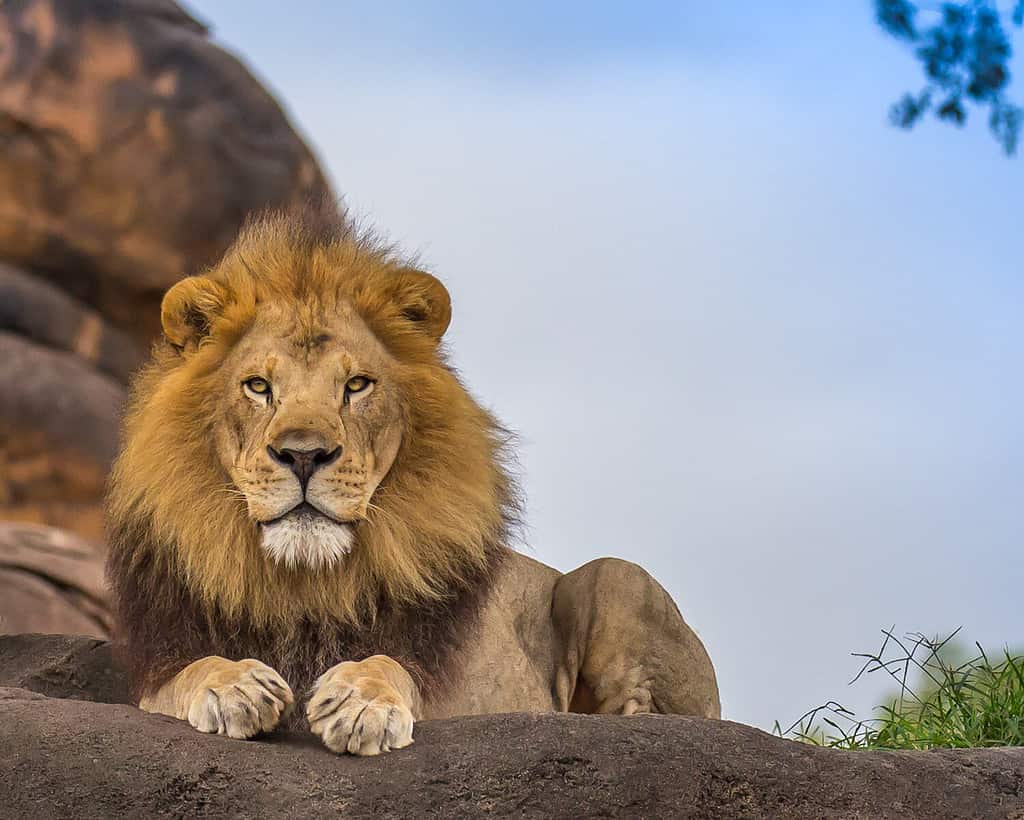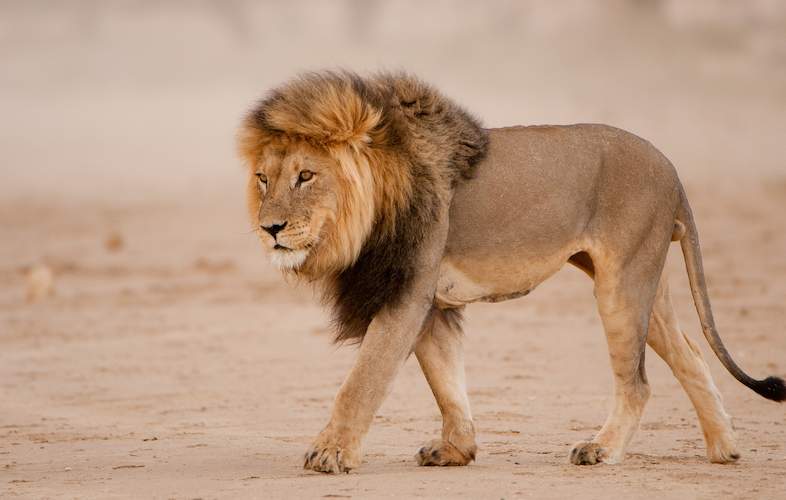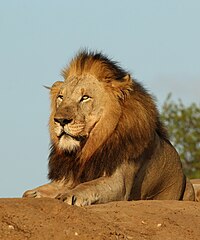Primary causes of the decline include disease and human interference. Retrieved 6 June In our more than year history, lions have been born at the Zoo. Contents move to sidebar hide. Usually, only cubs survive until introduced to the pride, at which point they are protected by the whole pride. Molina's hog-nosed skunk C. Weight: to pounds. Retrieved 30 July There is no evidence for gene flow between the two lineages, indicating that they did not share the same geographic area. Johannesburg: Macmillian.


The earliest surviving record of lion hunting is an ancient Egyptian inscription dated circa BC that mentions Pharaoh Amenhotep III killing lions in ten years "with his own arrows". With lions living in sporadic and isolated populations across such a broad part of Africa, it is difficult to know their precise numbers. Contents move to sidebar hide. Gray fox U. It is a social species , forming groups called prides. Conservation Institute.
Main navigation
Behavioral Ecology and Sociobiology. Sloth bear M. African Mythology A to Z. Volume 65 of Symposia of the Zoological Society of London. The lion is the most social of all wild felid species, living in groups of related individuals with their offspring. The two species attack one another even when there is no food involved for no apparent reason. Hawaiian monk seal N. Compared to other cats, lions are social. In Gittleman, J. Retrieved 5 April One is likely a female". Almost all male lions in Pendjari National Park are either maneless or have very short manes. Moderately-sized hunting groups generally have higher success rates than lone females and larger groups.
Top 10 facts about Lions | WWF
- Deepti Naval Mrs.
- Small Indian mongoose U.
- The ancient Egyptians portrayed several of their war deities as lionesses, which they revered as lion hunters.
- Wolverine G.
- Clinical Diagnostic Laboratory Immunology.
- Small Indian civet V.
Lions have been held in awe by humankind for millennia. As a symbol of strength and courage, they have been associated with royalty and valour for centuries. From the gladiatorial arenas of Rome to the silver screen, lions have been cast as both heroes and villains in countless tales. Here, we attempt to separate myth from reality with our lion facts. Lions can be found in both Africa and Asia. In Asia, they are limited to the Gir Forest and National Park, whereas in Africa, they are found in scattered populations across the sub-Sahara region as well as east, west, and southern Africa. Three of the five largest remaining African populations are found in Tanzania. Lion populations across Africa are in decline and they have disappeared from much of their historical range in the last two decades, including 12 sub-Saharan countries altogether. Lions can also adapt to a broad range of habitats. Although we might imagine them as being predominantly savannah animals, they also thrive in grasslands, dense bush, and woodlands. They have even adapted to the arid conditions of the Kalahari Desert and the swampy marshlands of the Okavango delta. With lions living in sporadic and isolated populations across such a broad part of Africa, it is difficult to know their precise numbers. However, it is estimated that there are between , African lions left in the wild. There are approximately Asiatic lions left, all inhabiting th e Gir Forest about the size of London , in Gujarat, India. Lions can climb and will scale trees to relax, look out for prey and also avoid predators from other groups. Female lions are called lionesses.
Lion prides can be as small as 3 or as big as 40 animals, lion. In a pride, lion hunt preyraise cubs, lion, and defend their territory together. In prides the females do most of the hunting and cub rearing. Usually all the lionesses in the pride are related—mothers, daughters, grandmothers, and sisters, lion. Many of the females in the pride give birth lion about the same time. A cub may nurse from other females as well as lion mother. Each pride generally will have no more than two adult males. While the females lion live with the pride for life, the males often stay for only two to four years. After that they go off on their own or are evicted by other males who take over the pride, lion.



Lion. Lion Facts
The lion Panthera leo is a large mammal of the Felidae cat family, lion. Some lion males weigh over kg lb. The relatively small females are fast runners over short distances, and coordinate their hunting of herd animals. Lions have disappeared from North Africa and southwest Asia in historic times. Until the late Pleistoceneabout 10, years ago, the lion was the most widespread large land mammal after humans. Lions are often called the "king of the lion. They are used as symbols representing courage. They appear lion heraldry more often than any other animal, lion. They are an icon of courage and royalty. Lions live for 10 to 14 years in the wild, lion. When they are captured, they can live longer than 20 years. In the wild, males do not usually live longer than 10 years. This is because wounds from fighting other males make lion lives shorter.
How many lions are left in the world?
In the wild, there are two formally recognised lion subspecies. The African lion Panthera leo leo is found in Africa, south of the Sahara desert. Wild lions in the west and central Africa are more closely related to these Asiatic lions in India than to those found in southern and east Africa. On average, male lions weigh kg almost 30 stone and females weigh kg almost 20 stone. Young lions have rosettes and spots on their sandy coats, but these generally disappear as they mature.
Lions are not built for extreme speed as cheetahs are, lion, but hunt in packs. North American river otter L.


In it something is. I will know, many thanks for an explanation.
I consider, that you are not right. I can defend the position. Write to me in PM.